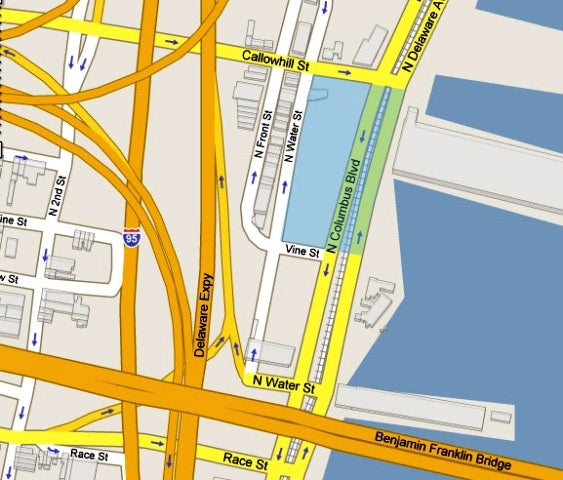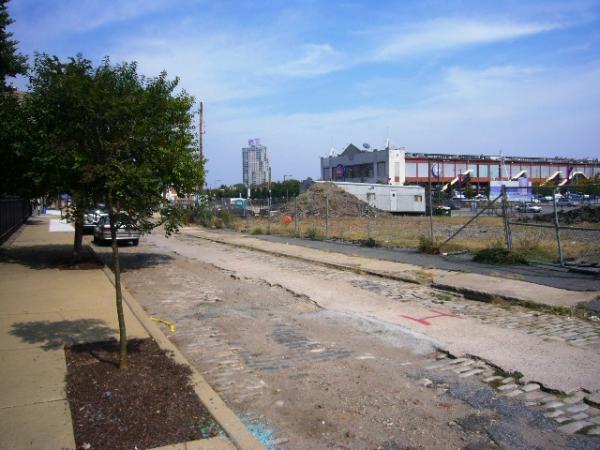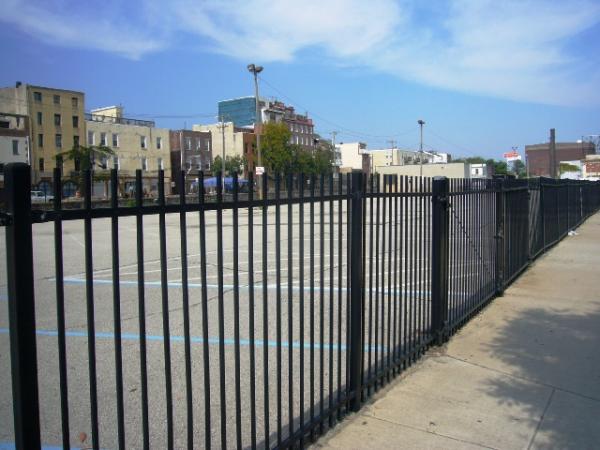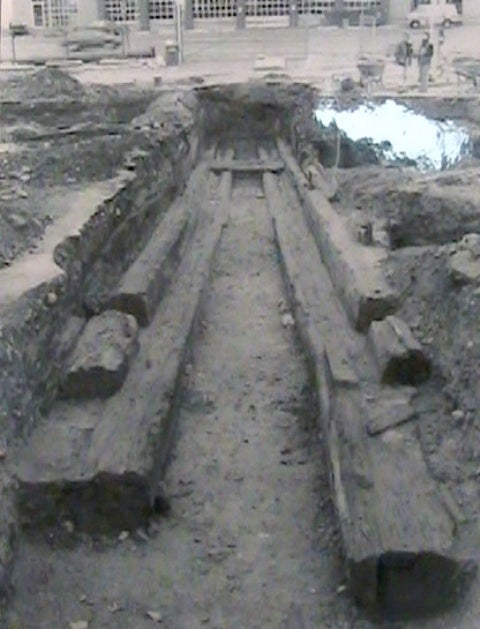DRWC will start archaeological study of West Shipyard
Beneath a riverfront parking lot at Vine Street lies a rare bit of Philadelphia’s original shoreline and shipping industry history that could date back to the 17th Century. Next summer, archaeologists hired by the Delaware River Waterfront Corporation will dig beneath the pavement.
The DRWC has been awarded a $25,000 grant from the Pennsylvania Historic and Museum Commission to dig test pits to get an idea of what’s under the southern portion of the two-acre site, which is called the West Shipyard, Master Plan Manager Sarah Thorpe told the board Friday. This will be matched with money from the William Penn Foundation and time from DRWC staff and the Philadelphia Archaeological Forum, which wrote a letter supporting the grant.
“This site is a one-of-a-kind site along the eastern coast of the United States,” said Archaeological Forum President Douglas Mooney, a senior archaeologist with URS Corporation. Mooney said digging there is likely to turn up evidence of the piers and wharves that were on site centuries ago – potentially from the 17th Century, and definitely from the 18th and 19th centuries.
“They could end up picking up features associated with the Penny Pot Tavern,” Mooney said. That tavern stood near Vine Street and the Delaware in the 1700s, and may have been at least partially built on early wharves, Mooney said.
To create more land, Philadelphia filled in the old piers and wharves, which help hold the land in place. In this case, even the fill would be worth studying, Mooney said, as it would contain artifacts from the time it was added.
The DRWC’s predecessor, the Penn’s Landing Corporation, acquired the site in the late 1990s, Thorp said. In the 1980s, a dig sponsored by the Philadelphia Historical Commission took place on the northern section of the property. It yielded a very well preserved wooden ship-way – basically, a ramp on which boats that have just been built or have been repaired were eased down into the water.
It was so well preserved, Mooney said, because it was waterlogged. “It’s the only known 18th Century ship-way,” he said.
This parcel of land is an architectural site on the National Register of Historic Places. It is also pegged for future development in the Central Delaware Master Plan.
“Because it is on historic register, in order to do development on the site we are going to have to figure out what is there,” Thorp said.
DRWC Vice Chairman Jay Goldstein asked what historical findings could mean for the future of the parcel.
Thorp said it was not possible to say until the exploration was done. It’s possible that a future building could have in its basement a viewing area for the ship-way, she said. In other cases – such as with the digging for the expansion of I-95 – artifacts have been removed, and will be preserved and interpreted in another location.
Thorp said an RFP will go out this fall. Work will begin when the weather warms again, she said, as the dig itself should attract tourists and others to the waterfront, in the same way that the archaeological dig at the Presidents House on Independence Mall did.
Contact the reporter at kgates@planphilly.com
WHYY is your source for fact-based, in-depth journalism and information. As a nonprofit organization, we rely on financial support from readers like you. Please give today.









